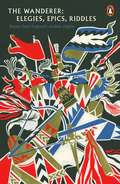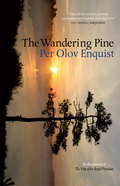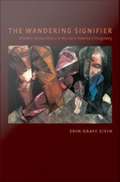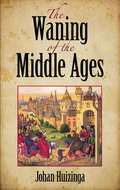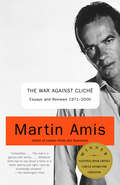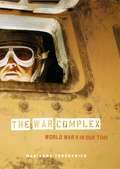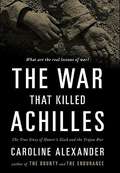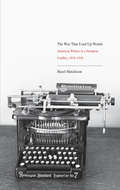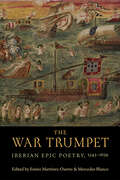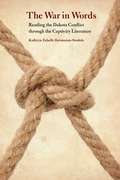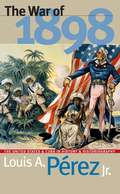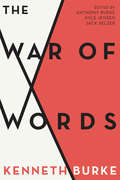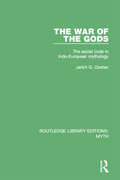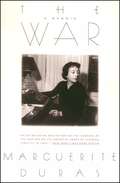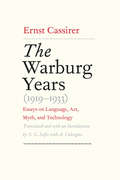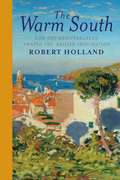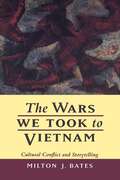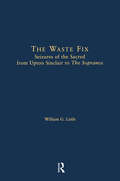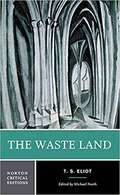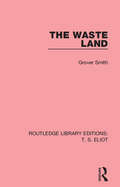- Table View
- List View
The Wanderer: Elegies, Epics, Riddles (Legends from the Ancient North)
by Petra BornerPart of a new series Legends from the Ancient North, The Wanderer tells the classic tales that influenced JRR Tolkien's The Hobbit and The Lord of the Rings'So the company of men led a careless life,All was well with them: until One beganTo encompass evil, an enemy from hell.Grendel they called this cruel spirit...'J.R.R. Tolkien spent much of his life studying, translating and teaching the great epic stories of northern Europe, filled with heroes, dragons, trolls, dwarves and magic. He was hugely influential for his advocacy of Beowulf as a great work of literature and, even if he had never written The Hobbit and The Lord of the Rings, would be recognised today as a significant figure in the rediscovery of these extraordinary tales.Legends from the Ancient North brings together from Penguin Classics five of the key works behind Tolkien's fiction.They are startling, brutal, strange pieces of writing, with an elemental power brilliantly preserved in these translations.They plunge the reader into a world of treachery, quests, chivalry, trials of strength.They are the most ancient narratives that exist from northern Europe and bring us as near as we will ever get to the origins of the magical landscape of Middle-earth (Midgard) which Tolkien remade in the 20th century.
The Wandering Pine: Life as a Novel
by Per Olov EnquistWhen everything began so well, how could it turn out so badly? A blisteringly frank autobiographical novel by Sweden's great man of letters - for readers of K. O. Knausgaard's My Struggle."Some life. Some novel . . . Wonderful, brave, evocative . . . It is a remarkable story, and Enquist is remarkably frank in narrating every last detail" HeraldWhat was it about Hjoggböle, a farming village in the northernmost part of Sweden, that created so many idiots - and writers? There was nothing to indicate that P.O. Enquist would be stricken by an addiction to writing. Nothing in his family - honest, hardworking people. Not a trace of poetry. And yet he worked his way, via journalism, novels and plays, to the centre of Swedish politics and cultural life. His books garnered prize after prize. His plays ran for decades and premiered on Broadway. Why then, living with a new wife in Paris, does he hole up in their palatial Champes-Élysées apartment, talking only to his cat? How is it that he wakes to find himself in an uncoupled carriage on a railway siding in Hamburg, two - or was it three? - days after the first-night party finished? And what is it that drives him to run shoeless through the deep January snow of an Icelandic plain, leaving the lights of the drying out clinic far behind? Narrating in the third person, as if he were merely a character in the eventful, perplexing and ultimately triumphantly redemptive drama of his own life, P.O. Enquist is as elliptical as Karl Ove Knausgaard is exhaustive. Clear-eyed, rueful, written with elegance and humour, this is the singular story of a remarkable man.
The Wandering Signifier: Rhetoric of Jewishness in the Latin American Imaginary
by Erin Graff ZivinWhile Jews figure in the work of many modern Latin American writers, the questions of how and to what end they are represented have received remarkably little critical attention. Helping to correct this imbalance, Erin Graff Zivin traces the symbolic presence of Jews and Jewishness in late-nineteenth- through late-twentieth-century literary works from Argentina, Brazil, Peru, Mexico, Colombia, and Nicaragua. Ultimately, Graff Zivin's investigation of representations of Jewishness reveals a broader, more complex anxiety surrounding difference in modern Latin American culture. In her readings of Spanish American and Brazilian fiction, Graff Zivin highlights inventions of Jewishness in which the concept is constructed as a rhetorical device. She argues that Jewishness functions as a wandering signifier that while not wholly empty, can be infused with meaning based on the demands of the textual project in question. Just as Jews in Latin America possess distinct histories relative to their European and North American counterparts, they also occupy different symbolic spaces in the cultural landscape. Graff Zivin suggests that in Latin American fiction, anxiety, desire, paranoia, attraction, and repulsion toward Jewishness are always either in tension with or representative of larger attitudes toward otherness, whether racial, sexual, religious, national, economic, or metaphysical. She concludes The Wandering Signifier with an inquiry into whether it is possible to ethically represent the other within the literary text, or whether the act of representation necessarily involves the objectification of the other.
The Waning of the Middle Ages
by Johan HuizingaThis classic study of art, life, and thought in France and the Netherlands during the fourteenth and fifteenth centuries ranks as one of the most perceptive analyses of the medieval period. A brilliantly creative work that established the reputation of Dutch historian John Huizinga (1872-1945), the book argues that the era of diminishing chivalry reflected the spirit of an age and that its figures and events were neither a prelude to the Renaissance nor harbingers of a coming culture, but a consummation of the old.Among other topics, the author examines the violent tenor of medieval life, the idea of chivalry, the conventions of love, religious life, the vision of death, the symbolism that pervaded medieval life, and aesthetic sentiment. We view the late Middle Ages through the psychology and thought of artists, theologians, poets, court chroniclers, princes, and statesmen of the period, witnessing the splendor and simplicity of medieval life, its courtesy and cruelty, its idyllic vision of life, despair and mysticism, religious, artistic, and practical life, and much more. Long regarded as a landmark of historical scholarship, The Waning of the Middle Ages is also a remarkable work of literature. Of its author, the New York Times said, "Professor Huizinga has dressed his imposing and variegated assemblage of facts in the colorful garments characteristic of novels, and he parades them from his first page to the last in a vivid style."An international success following its original publication in 1919 and subsequently translated into several languages, The Waning of the Middle Ages will not only serve as an invaluable reference for students and scholars of medieval history but will also appeal to general readers and anyone fascinated by life during the Middle Ages.
The Waning of the Middle Ages
by Johan HuizingaThis classic study of art, life, and thought in France and the Netherlands during the fourteenth and fifteenth centuries ranks as one of the most perceptive analyses of the medieval period. A brilliantly creative work that established the reputation of Dutch historian John Huizinga (1872-1945), the book argues that the era of diminishing chivalry reflected the spirit of an age and that its figures and events were neither a prelude to the Renaissance nor harbingers of a coming culture, but a consummation of the old.Among other topics, the author examines the violent tenor of medieval life, the idea of chivalry, the conventions of love, religious life, the vision of death, the symbolism that pervaded medieval life, and aesthetic sentiment. We view the late Middle Ages through the psychology and thought of artists, theologians, poets, court chroniclers, princes, and statesmen of the period, witnessing the splendor and simplicity of medieval life, its courtesy and cruelty, its idyllic vision of life, despair and mysticism, religious, artistic, and practical life, and much more. Long regarded as a landmark of historical scholarship, The Waning of the Middle Ages is also a remarkable work of literature. Of its author, the New York Times said, "Professor Huizinga has dressed his imposing and variegated assemblage of facts in the colorful garments characteristic of novels, and he parades them from his first page to the last in a vivid style."An international success following its original publication in 1919 and subsequently translated into several languages, The Waning of the Middle Ages will not only serve as an invaluable reference for students and scholars of medieval history but will also appeal to general readers and anyone fascinated by life during the Middle Ages.
The Waning of the Middle Ages
by Johan HuizingaThis classic study of art, life, and thought in France and the Netherlands during the fourteenth and fifteenth centuries ranks as one of the most perceptive analyses of the medieval period. A brilliantly creative work that established the reputation of Dutch historian John Huizinga (1872-1945), the book argues that the era of diminishing chivalry reflected the spirit of an age and that its figures and events were neither a prelude to the Renaissance nor harbingers of a coming culture, but a consummation of the old.Among other topics, the author examines the violent tenor of medieval life, the idea of chivalry, the conventions of love, religious life, the vision of death, the symbolism that pervaded medieval life, and aesthetic sentiment. We view the late Middle Ages through the psychology and thought of artists, theologians, poets, court chroniclers, princes, and statesmen of the period, witnessing the splendor and simplicity of medieval life, its courtesy and cruelty, its idyllic vision of life, despair and mysticism, religious, artistic, and practical life, and much more. Long regarded as a landmark of historical scholarship, The Waning of the Middle Ages is also a remarkable work of literature. Of its author, the New York Times said, "Professor Huizinga has dressed his imposing and variegated assemblage of facts in the colorful garments characteristic of novels, and he parades them from his first page to the last in a vivid style."An international success following its original publication in 1919 and subsequently translated into several languages, The Waning of the Middle Ages will not only serve as an invaluable reference for students and scholars of medieval history but will also appeal to general readers and anyone fascinated by life during the Middle Ages.
The Waning of the Middle Ages: A Study Of The Forms Of Life, Thought, And Art In France And The Netherlands In The Fourteenth And Fifteenth Centuries (Peregrine Bks.)
by Johan HuizingaThis classic study of art, life, and thought in France and the Netherlands during the fourteenth and fifteenth centuries ranks as one of the most perceptive analyses of the medieval period. A brilliantly creative work that established the reputation of Dutch historian John Huizinga (1872-1945), the book argues that the era of diminishing chivalry reflected the spirit of an age and that its figures and events were neither a prelude to the Renaissance nor harbingers of a coming culture, but a consummation of the old.Among other topics, the author examines the violent tenor of medieval life, the idea of chivalry, the conventions of love, religious life, the vision of death, the symbolism that pervaded medieval life, and aesthetic sentiment. We view the late Middle Ages through the psychology and thought of artists, theologians, poets, court chroniclers, princes, and statesmen of the period, witnessing the splendor and simplicity of medieval life, its courtesy and cruelty, its idyllic vision of life, despair and mysticism, religious, artistic, and practical life, and much more. Long regarded as a landmark of historical scholarship, The Waning of the Middle Ages is also a remarkable work of literature. Of its author, the New York Times said, "Professor Huizinga has dressed his imposing and variegated assemblage of facts in the colorful garments characteristic of novels, and he parades them from his first page to the last in a vivid style."An international success following its original publication in 1919 and subsequently translated into several languages, The Waning of the Middle Ages will not only serve as an invaluable reference for students and scholars of medieval history but will also appeal to general readers and anyone fascinated by life during the Middle Ages.
The War Against Cliche
by Martin AmisIs there anything that Martin Amis can't write about? In this virtuosic, career-spanning collection he takes on James Joyce and Elvis Presley, Nabokov and English football, Jane Austen and Penthouse Forum, William Burroughs and Hillary Clinton. But above all, Amis is concerned with literature, and with the deadly cliches-not only of the pen, but of the mind and the heart. In The War Against Cliché, Amis serves up fresh assessments of the classics and plucks neglected masterpieces off their dusty shelves. He tilts with Cervantes, Dickens and Milton, celebrates Bellow, Updike and Elmore Leonard, and deflates some of the most bloated reputations of the past three decades. On every page Amis writes with jaw-dropping felicity, wit, and a subversive brilliance that sheds new light on everything he touches.
The War Complex: World War II in Our Time
by Marianna TorgovnickThe recent dedication of the World War II memorial and the sixtieth anniversary commemoration of D-Day remind us of the hold that World War II still has over America's sense of itself. But the selective process of memory has radically shaped our picture of the conflict. Why else, for instance, was a 1995 Smithsonian exhibition on Hiroshima that was to include photographs of the first atomic bomb victims, along with their testimonials, considered so controversial? And why do we so readily remember the civilian bombings of Britain but not those of Dresden, Hamburg, and Tokyo? Marianna Torgovnick argues that we have lived, since the end of World War II, under the power of a war complex--a set of repressed ideas and impulses that stems from our unresolved attitudes toward the technological acceleration of mass death. This complex has led to gaps and hesitations in public discourse about atrocities committed during the war itself. And it remains an enduring wartime consciousness, one most recently animated on September 11, 2001. Showing how different events from World War II became prominent in American cultural memory while others go forgotten or remain hidden in plain sight, "The War Complex" moves deftly from war films and historical works to television specials and popular magazines to define the image and influence of World War II in our time. Torgovnick also explores the 1961 trial of Adolf Eichmann, the emotional legacy of the Holocaust, and the treatment of World War II's missing history by writers such as W. G. Sebald to reveal the unease we feel at our dependence on those who hold the power of total war. Thinking anew, then, about how we account for war to each other andourselves, Torgovnick ultimately, and movingly, shows how these anxieties and fears have prepared us to think about 9/11 and our current war in Iraq.
The War That Killed Achilles
by Caroline AlexanderThe Iliad is still the greatest poem about war that our culture has ever produced. For a hundred generations, poets and thinkers in the West have pored over, retold and argued about the events described in this martial epic, even when direct knowledge of it was lost. Various empires have admired it as a book that in telling the story of the siege of Troy also extols the warrior ethic, and teaches the young how to die well. Yet the figure at the heart of the epic, the consummate warrior Achilles, is a brooding, controversial hero. He is a fierce critic of those who have started this war and allowed it to drag on, consuming soldiers and civilians alike. Disconcertingly, The Iliad portrays war as a catastrophe that destroys cities, orphans children and wrecks whole societies. Caroline Alexander's extraordinary book is not about any of the traditional concerns that have occupied classicists for centuries. It is simpler and more radical than that. In her words, 'This book is about what the Iliad is about; this book is about what the Iliad says of war. '
The War That Used Up Words
by Dr Hazel HutchisonIn this provocative study, Hazel Hutchison takes a fresh look at the roles of American writers in helping to shape national opinion and policy during the First World War. From the war's opening salvos in Europe, American writers recognized the impact the war would have on their society and sought out new strategies to express their horror, support, or resignation. By focusing on the writings of Henry James, Edith Wharton, Grace Fallow Norton, Mary Borden, Ellen La Motte, E. E. Cummings, and John Dos Passos, Hutchison examines what it means to be a writer in wartime, particularly in the midst of a conflict characterized by censorship and propaganda. Drawing on original letters and manuscripts, some never before seen by researchers, this book explores how the essays, poetry, and novels of these seven literary figures influenced America's public view of events, from August 1914 through the Paris Peace Conference of 1919, and ultimately set the literary agenda for later, more celebrated texts about the war.
The War Trumpet: Iberian Epic Poetry, 1543–1639 (Toronto Iberic)
by Emiro Martínez-Osorio Mercedes BlancoThe epic poems written during the rise of Portugal and Spain on the global stage often dealt with topics quite unimaginable to the likes of Virgil or Homer. These poems reveal the astounding opportunities for upward social mobility and self-promotion afforded by broader access to print and the vast amount of knowledge and material wealth accrued through maritime exploration. Iberian poets of the period were quite cognizant of their ventures into uncharted territory, and that awareness informed their literary journeys. The War Trumpet features nine substantial essays that expand our understanding of Iberian Renaissance epic poetry by posing questions seldom raised in relation to poems such as La Araucana, Os Lusíadas, Carlo famoso, El Bernardo, Arauco Domado, Espejo de paciencia, and Felicissima Victoria, among others. Particularly compelling are questions concerned with early modern understandings of the natural world, the practice of poetic imitation, the discipline of cartography, or the reception of Petrarchism in the newly established viceroyalties of the New World. Fostering a greater appreciation of the intersection between poetry, war, and exploration, The War Trumpet sheds light on the transformative changes that took place during the period of Iberian expansion.
The War in Words: Reading the Dakota Conflict Through the Captivity Literature
by Kathryn Zabelle Derounian-StodolaThe War in Words is the first book to study the captivity and confinement narratives generated by a single American war as it traces the development and variety of the captivity narrative genre. Kathryn Zabelle Derounian-Stodola examines the complex 1862 Dakota Conflict (also called the Dakota War) by focusing on twenty-four of the dozens of narratives that European Americans and Native Americans wrote about it. This six-week war was the deadliest confrontation between whites and Dakotas in Minnesota's history. Conducted at the same time as the Civil War, it is sometimes called Minnesota's Civil War because it so was--and continues to be--divisive The Dakota Conflict aroused impassioned prose from participants and commentators as they disputed causes, events, identity, ethnicity, memory, and the all-important matter of the war's legacy. Though the study targets one region, its ramifications reach far beyond Minnesota in its attention to war and memory. An ethnography of representative Dakota Conflict narratives and an analysis of the war's historiography, The War in Words includes new archival information, historical data, and textual criticism.
The War of 1898
by Louis A. PérezA century after the Cuban war for independence was fought, Louis Perez examines the meaning of the war of 1898 as represented in one hundred years of American historical writing. Offering both a critique of the conventional historiography and an alternate history of the war informed by Cuban sources, Perez explores the assumptions that have shaped our understanding of the "Spanish-American War--a construct, he argues, that denies the Cubans' participation in their own struggle for liberation from Spanish rule. Perez examines historical accounts of the destruction of the battleship Maine, the representation of public opinion as a precipitant of war, and the treatment of the military campaign in Cuba. Equally important, he shows how historical narratives have helped sustain notions of America's national purpose and policy, many of which were first articulated in 1898. Cuba insinuated itself into one of the most important chapters of U.S. history, and what happened on the island in the final decade of the nineteenth century--and the way in which what happened was subsequently represented--has had far-reaching implications, many of which continue to resonate today.
The War of Words
by Jack Selzer Anthony Burke Kyle JensenWhen Kenneth Burke conceived his celebrated “Motivorum” project in the 1940s and 1950s, he envisioned it in three parts. Whereas the third part, A Symbolic of Motives, was never finished, A Grammar of Motives (1945) and A Rhetoric of Motives (1950) have become canonical theoretical documents. A Rhetoric of Motives was originally intended to be a two-part book. Here, at last, is the second volume, the until-now unpublished War of Words, where Burke brilliantly exposes the rhetorical devices that sponsor war in the name of peace. Discouraging militarism during the Cold War even as it catalogues belligerent persuasive strategies and tactics that remain in use today, The War of Words reveals how popular news media outlets can, wittingly or not, foment international tensions and armaments during tumultuous political periods. This authoritative edition includes an introduction from the editors explaining the compositional history and cultural contexts of both The War of Words and A Rhetoric of Motives. The War of Words illuminates the study of modern rhetoric even as it deepens our understanding of post–World War II politics.
The War of the Gods: The Social Code in Indo-European Mythology (Routledge Library Editions: Myth #4)
by Jarich G. OostenThis structural analysis of myth, first published in 1985, focuses on social and political problems of Indo-European mythology. Dr Jarich Oosten tells how the ancient Indo-European gods competed for supreme power and the exclusive possession of the sacred potion of wisdom and immortality. In examining the social code of the wars of the gods, he reveals that there are remarkably consistent patterns in time and space: paternal relatives, equals at first, prove unable to share power, magic goods, etc; while some gods retain their divine status as an exclusive prerogative, their brothers or paternal cousins are transformed into demons; relatives by marriage, however, who are unequal at first, succeed in sharing power and magic goods, and thus become equal partners in the pantheon. Dr Oosten describes how the ancient mythological cycles were broken down and transformed into heroic sagas and epics, and shows how many traditionally related themes – the severed head, the magic cauldron – were preserved. Gradually the political problems of kingship came to overshadow the social problems of kinship, as in the development of the myths of King Arthur. Dr Oosten argues that the social code remains basically the same, and his analysis of this code gives a fascinating perspective on the development of Indo-European mythology from the oldest written sources to the comparatively recent faitytales.
The War: A Memoir
by Barbara Bray Marguerite DurasAn elegant new paperback edition of one of Marguerite Duras's most important books. Written in 1944 and first published in 1985, Duras's riveting account of life in Paris during the Nazi occupation and the first months of liberation depicts the harrowing realities of World War II-era France "with a rich conviction enhanced by [a] spare, almost arid, technique" (Julian Barnes,The Washington Post Book World). Duras, by then married and part of a French resistance network headed by François Mitterand, tells of nursing her starving husband back to health after his return from Bergen-Belsen, interrogating a suspected collaborator, and playing a game of cat and mouse with a Gestapo officer who was attracted to her. The result is "more than one woman's diary. . . [it is] a haunting portrait of a time and a place and also a state of mind" (The New York Times).
The Warburg Years (1919-1933)
by Ernst Cassirer S. G. LoftsJewish German philosopher Ernst Cassirer was a leading proponent of the Marburg school of neo-Kantianism. The essays in this volume provide a window into Cassirer's discovery of the symbolic nature of human existence-that our entire emotional and intellectual life is configured and formed through the originary expressive power of word and image, that it is in and through the symbolic cultural systems of language, art, myth, religion, science, and technology that human life realizes itself and attains not only its form, its visibility, but also its reality. Thought and being are set in opposition and united in genuine correspondence by the symbolic strife between them that Cassirer calls Auseinandersetzung, which determines the ethical relationship of the self to the other.
The Warm South: How the Mediterranean Shaped the British Imagination
by Robert HollandAn evocative exploration of the impact of the Mediterranean on British culture, ranging from the mid-eighteenth century to today Ever since the age of the Grand Tour in the eighteenth century, the Mediterranean has had a significant pull for Britons—including many painters and poets—who sought from it the inspiration, beauty, and fulfillment that evaded them at home. Referred to as “Magick Land” by one traveler, dreams about the Mediterranean, and responses to it, went on to shape the culture of a nation. Written by one of the world’s leading historians of the Mediterranean, this book charts how a new sensibility arose from British engagement with the Mediterranean, ancient and modern. Ranging from Byron’s poetry to Damien Hirst’s installations, Robert Holland shows that while idealized visions and aspirations often met with disillusionment and frustration, the Mediterranean also offered a notably insular society the chance to enrich itself through an imagined world of color, carnival, and sensual self-discovery.
The Wars We Took to Vietnam: Cultural Conflict and Storytelling
by Milton J. BatesWhat Americans refer to as the Vietnam War embraces much more than the conflict with North Vietnam. Milton J. Bates considers the other conflicts that Americans brought to that war: the divisions stemming from differences in race, class, sex, generation, and frontier ideology. In exploring the rich vein of writing and film that emerged from the Vietnam War era, he strikingly illuminates how these stories reflect American social crises of the period.Some material examined here is familiar, including the work of Michael Herr, Tim O'Brien, Philip Caputo, Susan Sontag, Francis Ford Coppola, and Oliver Stone. Other material is less well known—Neverlight by Donald Pfarrer and De Mojo Blues by A. R. Flowers, for example. Bates also draws upon an impressive range of secondary readings, from Freud and Marx to Geertz and Jameson.As the products of a culture in conflict, Vietnam memoirs, novels, films, plays, and poems embody a range of political perspectives, not only in their content but also in their structure and rhetoric. In his final chapter Bates outlines a "politico-poetics" of the war story as a genre. Here he gives special attention to our motives—from the deeply personal to the broadly cultural—for telling war stories.
The Washington Book: How to Read Politics and Politicians
by Carlos LozadaThe Pulitzer Prize–winning opinion columnist at The New York Times explores how people in power reveal themselves through their books and writings and, in so doing, illuminates the personal, political, and cultural conflicts driving Washington and the nation.As a long-time book critic and columnist in Washington, Carlos Lozada dissects all manner of texts: commission reports, political reporting, Supreme Court decisions, and congressional inquiries to understand the controversies animating life in the capital. He also reads copious books by politicians and top officials: tell-all accounts by administration insiders, campaign biographies by candidates longing for high office, revisionist memoirs by those leaving those offices behind. With this provocative essay collection, Lozada argues that no matter how carefully political figures sanitize their experiences, positions, and records, no matter how diligently they present themselves in the best and safest and most electable light, they almost always let slip the truth. They show us their faults and blind spots, their ambitions and compromises, their underlying motives and insecurities. Whether they mean to or not, they tell us who they really are. In his memoirs and speeches, Barack Obama constantly invoked the power and meaning of his life story, Lozada notes, a sign of how the former president capitalized on his personal symbolism, trying to transform it from inspiration on the campaign trail into an all-purpose governing tool. In a soliloquy about his hair in a self-help book published two decades ago, Donald Trump revealed not just his vanity, Lozada explains, but his utter isolation from the world, long before he entered the bubble of the White House. In deft and lacerating prose, Lozada interprets the unresolved tensions of Hillary Clinton&’s ideological beliefs. He imagines the wonderful memoir George H.W. Bush could have given us but instead left scattered in throughout various books and letters. He explores why Kamala Harris has struggled to carve out a distinctive role as vice president. He explains how Ron DeSantis&’s pitch to America is just a list of enemies. And he even glimpses what Vladimir Putin fears the most, and why he seeks conflict with the West. He does so all through their own books, and their own words. Lozada reads these books so you don&’t have to. The Washington Book is the perfect guide to the state of our politics, and then men and women who dominate the terrain. It explores the construction of personal identity, the delusions of leadership, and that mix of subservience and ambition that can define a life in politics. The more we read the stories of Washington, Lozada contends, the clearer our understanding of the competing visions of our country.
The Waste Fix: Seizures of the Sacred from Upton Sinclair to the Sopranos (Literary Criticism and Cultural Theory)
by William G. LittleFirst published in 2002. This book explores the philosophical, social, and aesthetic implications of twentieth-century America's obsession with eliminating waste. Through interdisciplinary engagement with fiction and popular culture, William Little traces the way this obsession finds expression in powerful social forces (e.g., the drive to consume conspicuously; the Progressive-era campaign to manage scientifically; the current demand to "reduce, reuse, recycle"), and shows how such forces are governed by an idealism that links proper treatment of waste with the promise of salvation.
The Waste Land (Norton Critical Editions)
by T. S. Eliot Olaudah Equiano Michael NorthThe text of Eliot’s 1922 masterpiece is accompanied by thorough explanatory annotations as well as by Eliot’s own knotty notes, some of which require annotation themselves. <p><p> For ease of reading, this Norton Critical Edition presents The Waste Land as it first appeared in the American edition (Boni & Liveright), with Eliot’s notes at the end. "Contexts" provides readers with invaluable materials on The Waste Land’s sources, composition, and publication history. "Criticism" traces the poem’s reception with twenty-five reviews and essays, from first reactions through the end of the twentieth century. <p><p> Included are reviews published in the Times Literary Supplement, along with selections by Virginia Woolf, Gilbert Seldes, Edmund Wilson, Elinor Wylie, Conrad Aiken, Charles Powell, Gorham Munson, Malcolm Cowley, Ralph Ellison, John Crowe Ransom, I. A. Richards, F. R. Leavis, Cleanth Brooks, Delmore Schwartz, Denis Donoghue, Robert Langbaum, Marianne Thormählen, A. D. Moody, Ronald Bush, Maud Ellman, and Tim Armstrong. A Chronology and Selected Bibliography are included.
The Waste Land (Routledge Library Editions: T. S. Eliot Ser. #8)
by Grover SmithIn this study, first published in 1983, Professor Smith makes the argument that although The Waste Land is analogous in form to a musical composition that it is actually made of its literary echoes. He calls these a ‘music of allusions’ and shows the resemblance of this music in its evocativeness to the technique of Mallarmé and the French symbolists. Smith also comments extensively on Eliot’s critical theories as they bear on The Waste Land and traces the development of Eliot’s allusive and transformational poetic form from its genesis in early work. This title will be of interest to students of literature.
